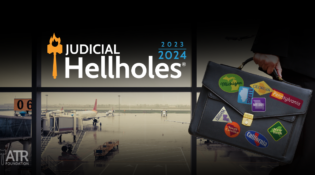First Outrageous State Supreme Court Ruling of 2013
It only took eleven days for a state supreme court to issue the first outrageous liability-expanding ruling of 2013. The ruling abandons a core principle of law– that manufacturers are liable only for injuries caused by their own products, not the products of others — and replaces it with, what is known in strict legal terms as, the “someone has to pay” approach.
The ruling, a product of the Alabama Supreme Court, came in the context of drug liability. The court ruled that companies that make brand-name prescription drugs are on the hook for injuries of people who take a competing generic drug.
The reason: the brand-name drug manufacturer in consultation with, and with the approval of, the U.S. Food and Drug Administration, originally developed the warning language, which, by virtue of federal law, is “merely repeated” by generic drug makers on their products.
About 80 courts across the country have rejected this theory, according to this scorecard, finding that such lawsuits violate the basic principle that manufacturers are liable only for injuries caused by their own products. Just two outlier courts — a mid-level appellate court in California and a federal district court in Vermont — allowed claims to proceed against a brand-name manufacturer for injuries to those who took generic products. In fact, three federal courts in Alabama had held that such liability, commonly known as “innovator liability,” was impermissible.
That changed with the Alabama Supreme Court’s decision in Wyeth, Inc. v. Weeks. The Alabama Supreme Court decided to abandon fundamental principles of law in order to provide plaintiffs with a deep pocket to sue.
By way of background, in PLIVA v. Mensing, the U.S. Supreme Court in 2011 ruled that generic drug makers could not be held liable for inadequately warning of the risks of their products because federal law requires them to use the same warnings as those approved by the FDA for the equivalent brand-name product and does not allow the generic manufacturer to unilaterally alter the labeling. That’s called “federal preemption.”
That preemption decision, the Alabama Supreme Court found, opened the door for it to take the state’s tort law on a wild new ride. Since plaintiffs can no longer sue the generic manufacturer for inadequate warnings, the court decided to shift the liability to the manufacturer of the brand-name drug, even though the plaintiff did not use its product.
But that is not law. When there is a defect in a product, product liability law distributes the burden of paying for injuries on each company in the chain of distribution. In other words, if you made money from selling the product, you are responsible for paying for resulting injuries resulting from that product.
But when a court holds a brand-name drug manufacturer liable when an individual took a competing generic product, it turns product liability law on its head. The brand-name drug manufacturer did not make money from the sale of the generic product. In fact, manufacturers often stop selling brand-name drugs when a generic version becomes available. According to one study, the generic version of a drug, on average, seizes 80 percent of brand-name drug sales within six months of the loss of patent protection. Many states, including Alabama, have substitution laws that require pharmacies to dispense the generic version of a drug, even if a doctor wrote the brand-name product on his or her prescription pad.
Yet under the “innovator liability approach,” the company that invested millions of dollars on research and development of a drug, and shepherded the product through the lengthy FDA approval process, remains indefinitely subject to liability for injuries allegedly cause by a competitor’s lower-cost product.
The public policy implications of this ruling, if accepted by other courts, could be disastrous. Will this new liability discourage innovating companies that already take an extraordinary gamble by seeking to develop life-improving or -saving medications, many of which do not make it to market, from doing so? Will the price of new drugs rise significantly because companies will now need to account for unpredictable future liability stemming from generic products that it does not sell?






